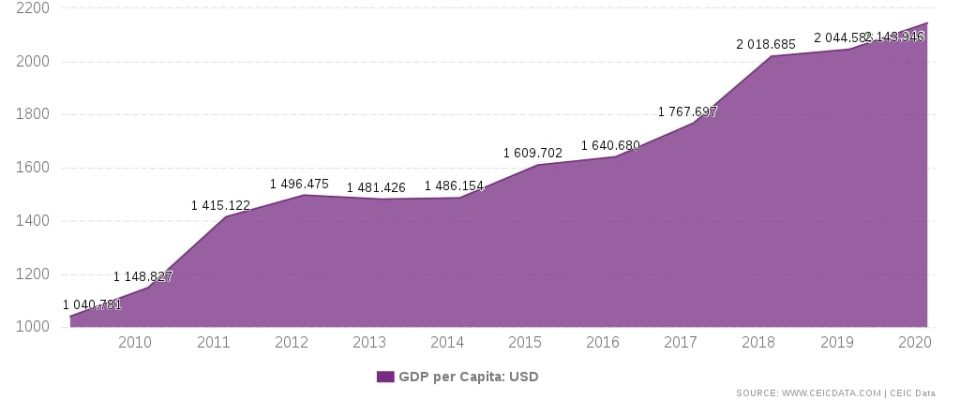
India's per capita income has doubled since 2014-15: Stats

Despite the challenge of uneven income distribution, India’s per capita income in nominal terms has doubled to Rs 1,72,000 since 2014-15, when the NDA government led by Narendra Modi took office.
As per the National Statistical Office (NSO), the annual per capita (net national income) at current prices is estimated at Rs 1,72,000 in 2022-23, up from Rs 86,647 in 2014-15, suggesting an increase of about 99 per cent.
Also Read: FinMin monitoring daily receipts, expenses in March to check FY23 fiscal deficit
In real terms (constant prices), the per capita income has increased by about 35 per cent from Rs 72,805 in 2014-15 to Rs 98,118 in 2022-23.
“You are looking at GDP in current prices, but if you account for inflation, the increase is much less,” said noted development economist Jayati Ghosh on doubling of per capita income in nominal terms.
She further said distribution is critical.
“Most of this increase has accrued to the top 10 per cent of the population. By contrast, median wages are falling, and possibly even lower in real terms,” said the former JNU professor.
As per the NSO data, the per capita income dipped during the Covid period, both in real and nominal terms. However, it has picked up in 2021-22 and 2022-23.
Also Read: Government not in ‘crazy rush’ to sell everything: FM Nirmala Sitharaman
Former director of premier economic research institute NIPFP Pinaki Chakraborty said as per the World Development Indicator data base, average growth of Indias per-capita income in real term for the period from 2014 to 2019 was 5.6 per cent per annum.
“This growth is significant. We have seen improvements in outcome related to health, education, and economic and social mobility. Covid impacted us badly. However, we have seen significant economic recovery after Covid.
“Sustaining per-capita income growth at 5 to 6 per cent per annum with appropriate redistributive policies will help sustain this momentum. We also have to factor in unevenness in growth within the country. Balanced regional development will act as a catalyst for higher growth,” he said.
Also Read: Citibank scales down India operations, joins other foreign banks
The Modi government has taken several pro-poor initiatives, and is trying to ensure benefits of government schemes reach the needy people directly. The measures include a mega financial inclusion drive like opening Jandhan accounts and MUDRA loan scheme; focus on digitisation; and free distribution of ration under Right to Food programme.
Nagesh Kumar, Director, Institute for Studies in Industrial Development (ISID), said per capita incomes have increased in real terms and they do reflect rising prosperity.
“However, the point to be noted is that per capita income is an average income of Indians. The averages mask the rising inequalities. Rising concentration of incomes at the high end means incomes of those at the lower rung of the income ladder may not be changing much,” he said.
Kumar further said India continues to be the bright spot in the world economy.
Also Read: Axis Bank completes Citi India’s retail biz buy, pays Rs 11,603 cr
It is poised to remain the fastest growing major economy in the medium term despite the headwinds arising from the Ukraine war and other uncertainties as many countries in the world are in the grip of recession and many others are reeling under the debt crisis in the aftermath of the Ukraine war, he added.
According to IMF projections, India has overtaken the UK to become the world’s fifth-largest economy and is now behind only the US, China, Japan and Germany. A decade back, India was ranked 11th among the large economies while the UK was at the fifth position.
(With agency inputs)

